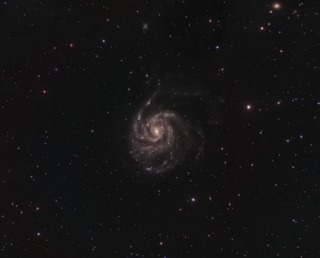
- Constellation: Ursa Major
- Right Ascension: 14h 03m 12.6s
- Declination: +54° 20′ 57″
- Distance: 20 million ly
Spiral galaxy M101 and its current supernova SN 2023ixf as of June 25th 2023. Currently around mag 11. Discovered by Koichi Itagaki of Japan. It was a Type II core collapse supernova.
- Details
- Category: Supernovas
- Telescope: Explore Scientific 127 Refractor
- Camera: ZWO 2600 MM
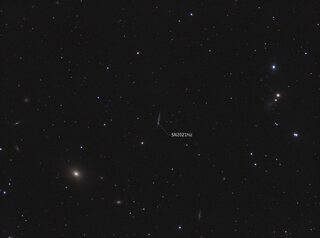
- Constellation: Virgo
- Right Ascension: 12hr 25' 43"
- Declination: 07º 13' 01"
- Distance: 46 million light years
Newly discovered SN2021hiz located in galaxy UGC 7513 in the Virgo constellation. Discovered March 30. Type 1a supernova, created by a white dwarf in a binary system. Further brightening is expected before it fades away.
- Details
- Category: Supernovas
- Telescope: Explore Scientific 127 Refractor
- Camera: ZWO 1600 MM
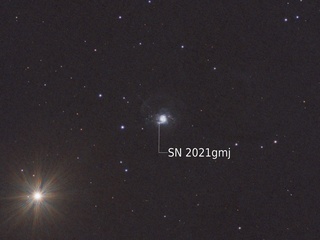
- Constellation: Ursa Major
- Right Ascension: 10h 38m 45.857s
- Declination: +53° 30′ 11.89″
- Distance: 34 million light years
SN2021gmj located in host galaxy NGC 3310 in the constellation of Ursa Major. It was discovered by DLT40 on March 20, 2021. Last reported magnitude was 15.6 as of this entry. It was a Type II supernova, a core collapse supernova.
- Details
- Category: Supernovas
- Telescope: Explore Scientific 127 Refractor
- Camera: ZWO 1600 MM
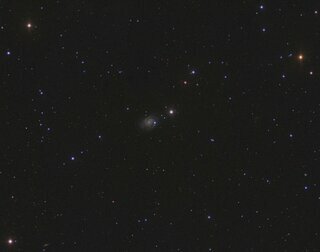
- Constellation: Pisces
- Right Ascension: 01h 24m 03.89603s
- Declination: +12° 55′ 02.8476″
- Distance: 83 million light years
Supernova SN2020uxz located in galaxy NGC 514. Type 1a supernova where a white dwarf accretes matter from a binary companion star until it reaches a critical mass and ignites as a supernova, currently shining at 13.8 magnitude.. NGC514 is 80+ million light years away located in Pisces.
- Details
- Category: Supernovas
- Telescope: Explore Scientific 127 Refractor
- Camera: ZWO 1600 MM
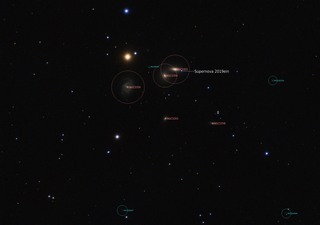
Supernova 2019ein a type 1a is located in the lenticular galaxy NGC5353 in the galaxy cluster of Hickson 68. Imaged the night of May 14, 2019.
Annotated image follows.
- Details
- Category: Supernovas
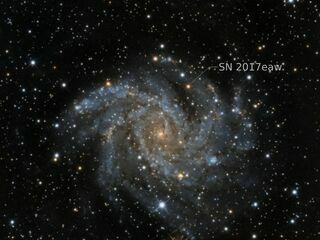
Supernova 2017eaw, discovered on May 14, 2017 by Patrick Wiggins in the aptly named "FireWorks Galaxy", NGC 6946. With 10 supernovas in the last century, it has been quite active in producing supernovas. Months later, near the end of August, the supernova is still quite bright. Revisited it on the nights of August 18-21 to capture this image of it with the RC10 and the Atik 314l+ camera.
- Details
- Category: Supernovas